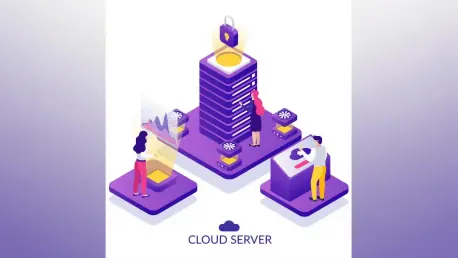An enterprise cloud revolution is coming in 2025, and it promises significant upheavals in how businesses approach their cloud computing infrastructure and strategy. The convergence of advanced technological demands, such as generative AI, and rising concerns over public cloud costs is creating a perfect storm. Enterprises must rethink their cloud strategy to navigate this landscape successfully. Cloud architecture is expected to take center stage in 2025, with major implications for businesses that adapt effectively and those that don’t.
The elevated demands of running AI models are causing a radical shift in cloud infrastructure dynamics, making traditional deployments appear inadequate. Gartner’s projections indicate that enterprise AI workloads will account for more than 30% of total cloud infrastructure capacity by 2025. This significant shift illustrates how enterprises need to elevate their cloud strategies immediately. Additionally, CEOs and CFOs are experiencing severe financial stress due to exorbitant public cloud costs that far exceed original budgets, and the pressures of AI-driven cloud spending add to these strains.
This escalating expense often results from the technical debt accrued during previous, poorly-managed cloud transitions. ‘Lift-and-shift’ strategies from the last decade have left companies in precarious financial positions with respect to their cloud investments. Now, boards and top executives, historically disinterested in IT infrastructure, are closely scrutinizing these costs, seeking relief from the unexpected financial burden.
1. Organize Your Current Setup
Spend the next three to six months thoroughly examining your current cloud spending and usage patterns. Look at the actual numbers, not the cleaned-up versions shown to executives. Map out your AI and machine learning (ML) workload projections, as they will likely exceed your current estimates. Identifying which workloads in your public cloud deployments are costing you the most—you will often be surprised at what you find.
Understanding where your money is leaking is crucial. With AI and ML set to drastically increase infrastructure demand, having a clear view of your current resource allocations will pave the way for more strategic decisions. Take a microscope to every part of your cloud infrastructure, assessing both capital and operational expenditures. This exercise will not only reveal inefficiencies but will also help you understand which areas require immediate attention and optimization to accommodate future workloads.
Moreover, optimizing current cloud usage patterns necessitates an honest dialogue within the enterprise about actual versus projected needs. This transparency starts with dissecting sanitized reports and progresses to compiling a comprehensive, unvarnished view of utilization. By doing so, you can set the stage for more informed decision-making when considering AI and ML workload expansions. These insights will be pivotal in aligning your cloud investments with the growing computational needs while preventing cost overruns.
2. Create a Workload Placement Plan
Develop a strategy for where to place your workloads that makes sense. Consider factors like data gravity, performance needs, and regulatory requirements. This isn’t about following the latest trend; it’s about making decisions that align with business realities. Create clear ROI models for your hybrid and private cloud investments. Just because the public cloud seems like the default choice now doesn’t mean it will be the best option for all workloads going forward.
A sound workload placement strategy aligns business objectives with technology needs. Data gravity—the concept that data attracts applications and services—plays a crucial role here. Identifying where your data resides and how it flows through your systems will guide you in making smarter workload placement decisions. Additionally, performance requirements must be matched with the most suitable infrastructure environments to ensure optimal efficiency and cost-effectiveness.
Consider also the regulatory landscape, as different sectors may have stringent compliance requirements dictating data handling and storage. This adds another layer of complexity to your workload placement strategy. Combining data gravity with performance and regulatory considerations can help you devise a more tailored plan for hybrid and private cloud use. Hybrid environments, where workloads move fluidly between on-premises solutions and public clouds, offer flexibility and cost advantages aligned with specific operational needs.
3. Focus on Technical Architecture
Your attention should be on optimizing data pipelines, integrating edge computing, and meeting AI/ML infrastructure needs. Multicloud connectivity is no longer optional—it’s essential for survival. However, you must also maintain strong security and compliance frameworks. Ensuring your data pipelines are optimized means you’re getting the maximum efficiency out of your infrastructure, which is crucial for AI and ML workloads that typically require substantial data volumes to function effectively.
Integrating edge computing capabilities will also allow you to process data closer to its source, reducing latency and improving performance. This is increasingly important in applications that require real-time analytics and decision-making. Moreover, edge computing can sometimes alleviate the financial burdens of public cloud dependency by shifting workloads to more cost-effective environments.
As multicloud environments become the default architecture, ensuring robust connectivity between various cloud platforms is imperative. However, the benefits of multicloud setups come with heightened security and compliance challenges that must be rigorously addressed. Robust security protocols, continuous monitoring, and stringent compliance measures are non-negotiable facets of evolving technical architecture.
4. Establish a Cloud Economics Office
This is crucial, and many enterprises get it wrong. Set up a Cloud Economics Office that combines infrastructure specialists, data scientists, financial analysts, and security experts. This isn’t just another IT team; it’s a business function that must drive real value. Shift investment priorities to focus on automated orchestration tools, cloud management platforms, and data fabric solutions. A cross-functional team ensures a holistic view of cloud investments, combining technical know-how with financial acuity.
This dedicated office should spearhead efforts to make cloud spending more transparent and accountable. The Cloud Economics Office must develop models for total-cost-of-ownership (TCO) and return-on-investment (ROI) that accurately reflect the monetary value of cloud resources. Moreover, the office should also analyze spending patterns and predict future resource needs for AI/ML infrastructure, identifying areas where automation and orchestration tools can drive efficiency gains.
Additionally, infrastructure specialists should work closely with data scientists to ensure that AI and ML workloads are optimized and aligned with cloud infrastructure capabilities. Security experts will ensure regulatory compliance and safeguard against vulnerabilities, while financial analysts evaluate cost-effectiveness. This holistic approach aligns cloud strategy with broader business goals, paving the way for more intelligent, flexible cloud architectures.
5. Implement Financial Management Practices
Financial management is key. Implement proper chargeback mechanisms and develop clear total-cost-of-ownership models. Make people accountable for cloud spending. You’ll be amazed at how behavior changes when departments see the actual costs of their cloud usage. Be cautious with finops. While there is value in finops, the way some “finops consultants” explain and implement it can lead to misleading metrics—just saying.
Accountability transforms cloud spending habits and fosters a culture of financial responsibility. Chargeback mechanisms that allocate costs to specific departments can highlight the most significant expenditure areas, prompting better resource management decisions. When departments comprehend the direct cost implications of their cloud usage, it often leads to more judicious consumption and reduced wastage.
Comprehensive TCO models are equally essential, offering a complete view of cloud spending, encompassing both direct and indirect costs. By implementing these models, enterprises can better understand the fiscal impact of their cloud strategies and make more informed decisions regarding future investments. These practices also help in setting accurate budgets and expectations.
6. Execute the Transformation
This transformation should span 12 to 24 months, starting with assessment and planning, moving through pilot projects, and ending with full-scale implementation. Remember, this isn’t just an IT project. It’s a business transformation initiative that needs buy-in from all stakeholders. Proper assessment and planning phases lay the groundwork for successful transformation, identifying key areas needing improvement and setting clear objectives and timelines.
During the pilot project phase, enterprises should test new cloud strategies on a smaller scale, learning and iterating based on real-world feedback. This phase is crucial for identifying potential challenges and refining the approach based on insights gained. Full-scale implementation will follow, using the knowledge and strategies developed during the earlier phases.
Stakeholder engagement is critical throughout this process. Ensuring buy-in from executives, managers, and end-users will facilitate smoother implementation and increase the likelihood of success. Effective communication and ongoing training can help stakeholders understand the benefits and requirements of the transformation.
Conclusion
The year 2025 is set to bring a revolution in enterprise cloud computing. This transformation promises major changes in how businesses manage their cloud infrastructures and strategies. With the convergence of advanced technological needs, such as generative AI, and escalating concerns about public cloud costs, enterprises are compelled to reassess their cloud strategies to thrive in this evolving landscape. In 2025, cloud architecture will be crucial, significantly impacting businesses that adapt well and those that do not.
AI model demands are driving a fundamental shift in cloud infrastructure, rendering traditional deployments insufficient. Gartner predicts that by 2025, enterprise AI workloads will represent over 30% of total cloud infrastructure capacity. This shift underscores the urgency for enterprises to upgrade their cloud strategies immediately. CEOs and CFOs are grappling with severe financial stress due to soaring public cloud costs, which significantly exceed initial budgets. AI-driven cloud expenses add to these pressures.
Much of this growing cost stems from technical debt accumulated during poorly managed cloud transitions in the past. The ‘lift-and-shift’ strategies from previous decades have placed companies in challenging financial situations. Consequently, boards and top executives, who previously paid little attention to IT infrastructure, are now scrutinizing these expenses, seeking solutions to alleviate the unexpected financial burden.









